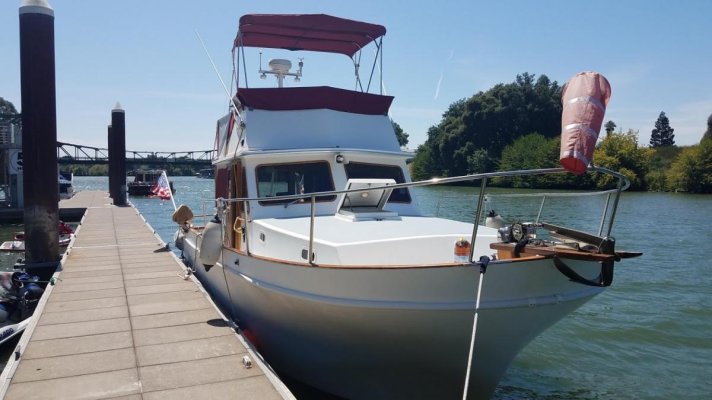These pictures (somewhat poorly) illustrate the hassle of trying to make use of a snubber on the all-chain rode of our EB47.
I don't have any better bow/side view pix, and this one shows the boat during delivery when it still had both the Fortress and the plow anchors in place on the roller. I only keep the plow anchor up there now. It's tough to tell from the side view, but easier from astern, but there's a rod that at the far forward end, presumably there to help avoid the anchor/chain from coming up above the roller. This makes it tedious trying to get anything attached to the chain. Any line attached has to be either fed in from up/over that rod or fed out with the chain. Either one makes for problems. Fed out with the chain means having to carefully grab it with a boat hook, lest it drop into the water. Getting it forward and under that rod is a longer reach than you might think, just looking at these pictures.
I think the rod can be removed, and that would greatly ease putting a snubber on the chain without needing to be reaching out over the end of the roller. With the plow anchor in use it's hook shape seems to be more than sufficient for keeping it 'in place' on the roller. As shown in the picture, if I had the Fortress up there I'd probably have to keep the rod installed to avoid letting it flap upward if seas picked up.


